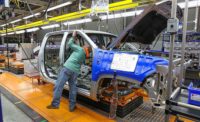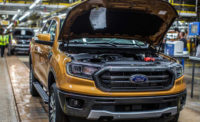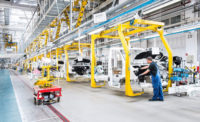We take for granted that our supply chains will deliver the products we desire, or at least we once did. We don’t care about their complexity. How could there be complexity? They have always delivered reliably. Products move easily and readily from manufacturers to intermediaries to store shelves. Our shelves are nearly always well stocked.
But then, along comes a pandemic and work disruptions. Suddenly, all of that supply chain efficiency is out the window. Even worse, COVID has not been a momentary hitch in the supply chain, but an ongoing complication.
Moreover, COVID hasn’t been the only problem to disrupt our supply chains. Earlier this year, an ice storm in Texas and a fire at Renesas Electronics’ semiconductor factory in Naka, Japan, put a major crimp in the world’s supply of microchips. The shortage has affected numerous industries, including appliances, consumer electronics and LED lighting. Automotive OEMs, which rely on such chips to control everything from engines to infotainment systems, have been forced to drastically curtail production.
The shortage has even affected me personally. I used to play bass in a band back in the ’80s, and I’ve begun playing again consistently. (Thank you, work from home!) I purchased a wireless set which allows me to play untethered. This was great! However, the product had a design flaw, and it quit working in short order. Fortunately, the company was happy to fix the problem at no cost, and I shipped it back. However, due to the chip shortage, I had to wait five months for the replacement part.
Starting and stopping a supply chain is not like starting and stopping a car. Much planning goes into starting up a manufacturing line or transitioning from one product to another. Suddenly stopping production, while demand remains, creates a backlog of orders. It’s a lot like trying to bail out a boat while water is still flowing into it. Once manufacturers and their suppliers get behind, they remain behind until output increases or demand decreases.
Manufacturers can mitigate supply chain disruptions in many ways. They can rethink inventory levels. They can reshore or near-shore production. They can diversify their supply base or partner with a logistics expert. Needless to say, planning ahead is critical. Have you conducted a supply chain vulnerability audit lately?
The March of Technology
Manufacturers can also mitigate supply chain disruptions by rethinking their product designs. Do cars, appliances and other products really need to be so complex? Lots of technologies can add to a product’s feature set, but they can also make our products less reliable and our supply chains more vulnerable to disruption.
To be sure, some consumers prefer to have the latest technology, even if the functional difference between the old model and the new one is not appreciable. Similarly, some automotive OEMs want to be seen in the marketplace as providers of high-tech vehicles. However, most automakers and consumers don’t feel that way. Why should automotive OEMs even care about Moore’s Law?
A business based upon technology for the sake of technology is perhaps not very sound. Developing new products is costly, time-consuming and fraught with risks. Technology that works does not necessarily need to be changed because it is seemingly obsolete. By what standard has it become obsolete? If an existing integrated circuit (IC) meets customer expectations, how can a smaller circuit or a new chip making process make the older component obsolete?
That question is at the root of the automotive industry’s current chip shortage dilemma. The industry has come to rely on the latest chips from the newest fabs. Dozens of them are used in everything from brake systems to air bag controls. Now, they have become choke points. Ironically, “obsolete” chip technologies once reigned supreme in these applications. These “ancient” chips, comparatively simple transistors for the day, are far too primitive to be used in high-tech devices, such as smartphones and televisions. But, they were plentiful and easy to make.
I would submit that customers buy products to solve some perceived need. That need seldom identifies specific ICs, but rather specific functional and performance attributes. Those are what should point engineers to specific ICs.
A vehicle electrical system contains numerous electronic control units (ECUs). This network of controllers works together to provide various vehicle functions. There are many orchestrated interactions. These interactions start as descriptions from systems engineering and lead eventually to specific component requirements. The systems engineering description often includes the environmental conditions to which the product will be subjected. Vehicle-grade ICs are different from those used in consumer electronics. A phone is not subjected to the same amount of heat as engine components, for example.
The issue is that reliability is of enormous concern to automakers. The vast majority of chip-dependent systems in cars are crucial for safety. Those chips are required to perform at peak efficiency without regard to conditions such as temperature, humidity, dirt and vibration.
In the best of cases, delivering a new vehicle to the market is not a short-term proposition. Connecting vehicle development to IC development can be a costly proposition. I know this from experience.
An automotive OEM was developing a new component for its range of vehicles. Development of the component was concurrent with development of the IC by the supplier. We produced several prototypes of the component, tested and explored to mature our design. Just as our design was becoming mature enough for production, the IC manufacturer ended the project to produce the chip.
Suddenly, the OEM had to rework the design, change components, and go through another round of prototypes and testing. The design change affected more than just the hardware; it affected the software, as well. The software was for a specific hardware and IC platform. The first chip we chose had more on-board memory, both volatile and nonvolatile. Without that chip, our design would need to have external memory, addressing schemes, and software for accessing the memory. We didn’t have to entirely rewrite the code, but we did have to do another round of comprehensive software testing as well as electromagnetic compatibility checks.
Vehicles are expensive to develop and manufacture. The cost of failure in the field can be high. At best, recalls and rework can be costly. At worst, field failures can be deadly. Given product complexity and manufacturing capability, it is clearly prudent to spend considerable time and effort on design verification testing and process verification testing.
In short, a prudent product design can help mitigate the risk of supply chain disruptions, and a well-managed supply chain can help mitigate the risk of delays in new product introduction. Each influences the other.



